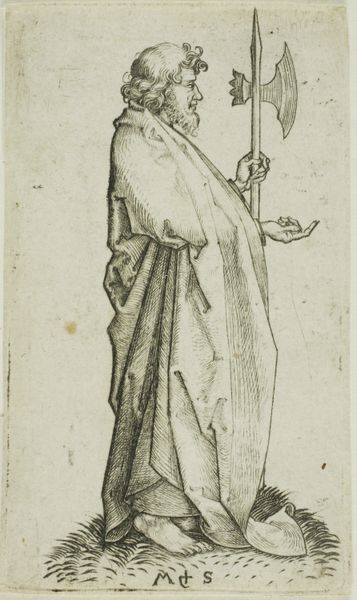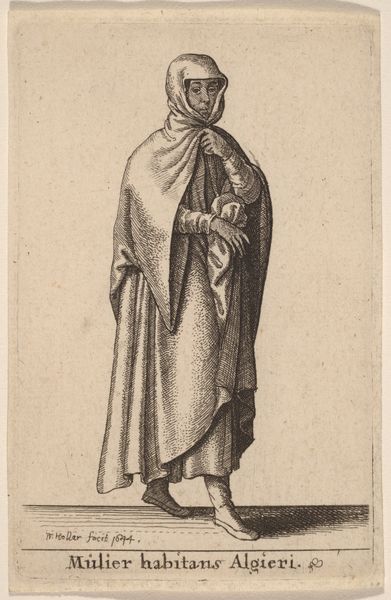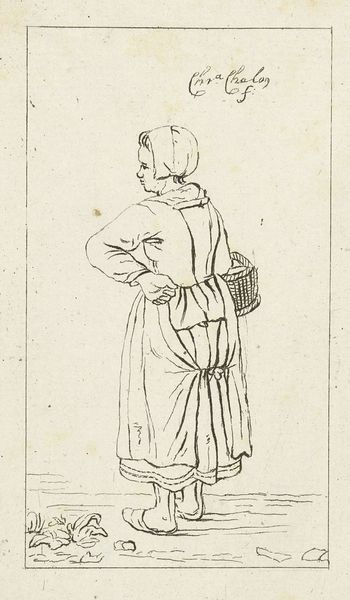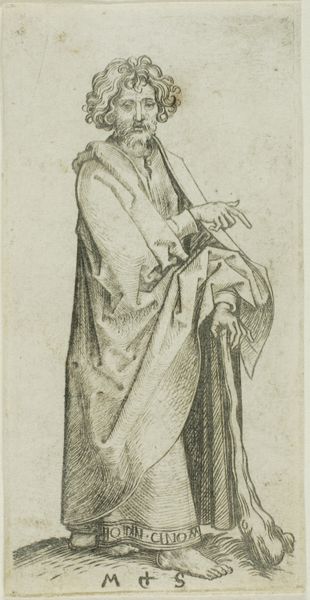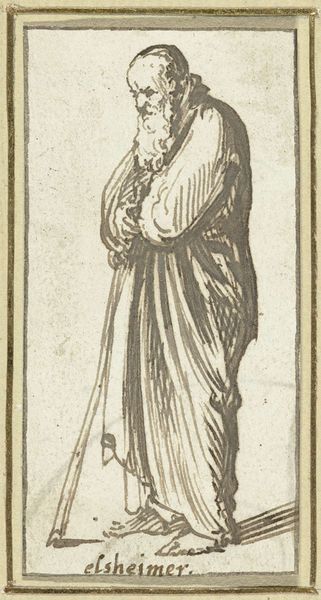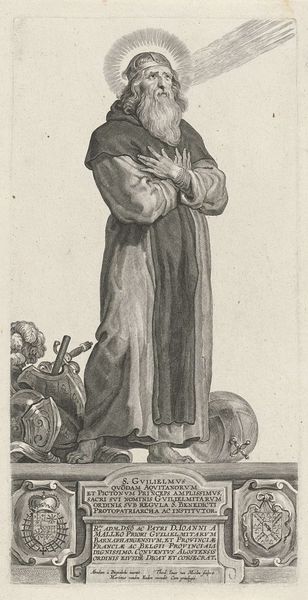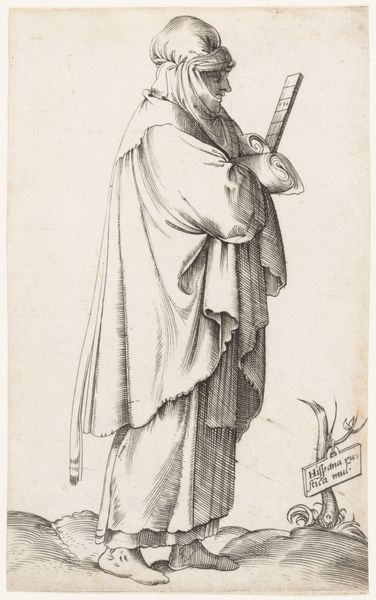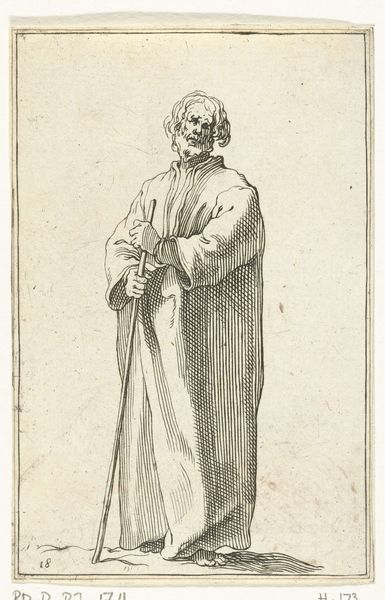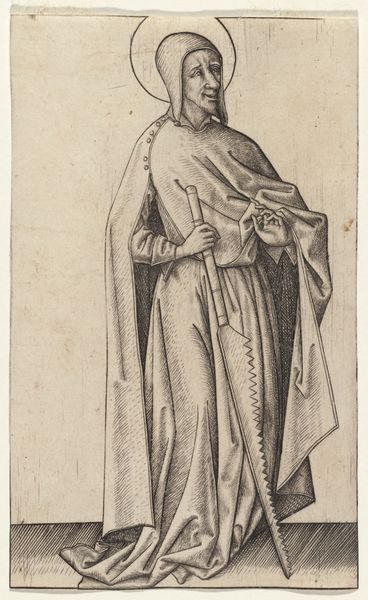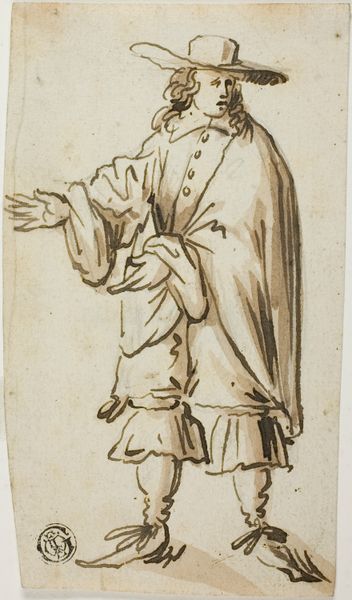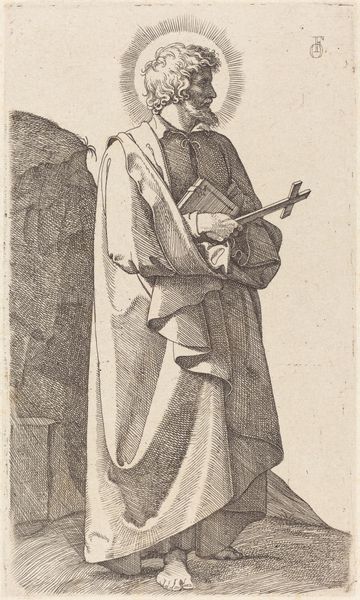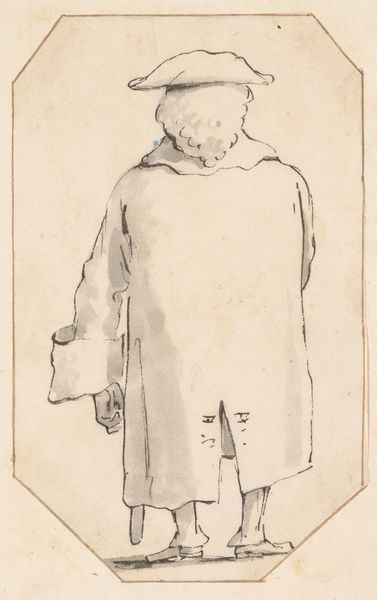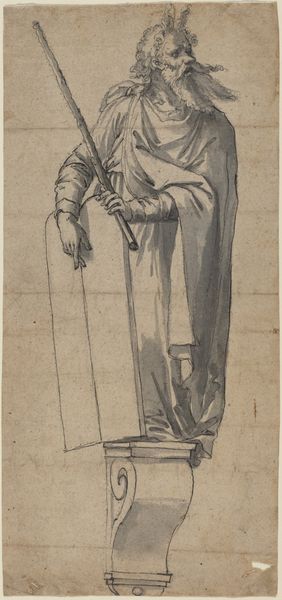
Mannenfiguur met een muts en jas, van achteren gezien c. 1617 - 1619
0:00
0:00
drawing, paper, ink
#
portrait
#
drawing
#
dutch-golden-age
#
pencil sketch
#
paper
#
ink
#
genre-painting
Dimensions: height 204 mm, width 127 mm
Copyright: Rijks Museum: Open Domain
Gerard ter Borch I created this pen and brown ink drawing, titled "Figure of a Man in a Cap and Coat, Seen From the Back," sometime before 1662. Ter Borch was working in the Dutch Golden Age, a period of tremendous economic growth and cultural flourishing in the Netherlands. Here, we see a lone figure, who may be a prosperous citizen, rendered with precise detail and subtle shading that captures the texture of his coat and cap. The man is turned away from us, concealing his facial features, which could invite the viewer to consider the relationship between appearance and identity. The choice to depict the man from behind is a deliberate artistic decision. It suggests a sense of privacy and perhaps even anonymity, creating a space for viewers to project their own interpretations. It also emphasizes the clothing as a marker of social status. The detailed rendering of the coat and cap underscores the importance of attire in defining one’s position in 17th-century Dutch society. What does it mean to turn one's back on the viewer? What does it mean to be seen, but not known?
Comments
No comments
Be the first to comment and join the conversation on the ultimate creative platform.
